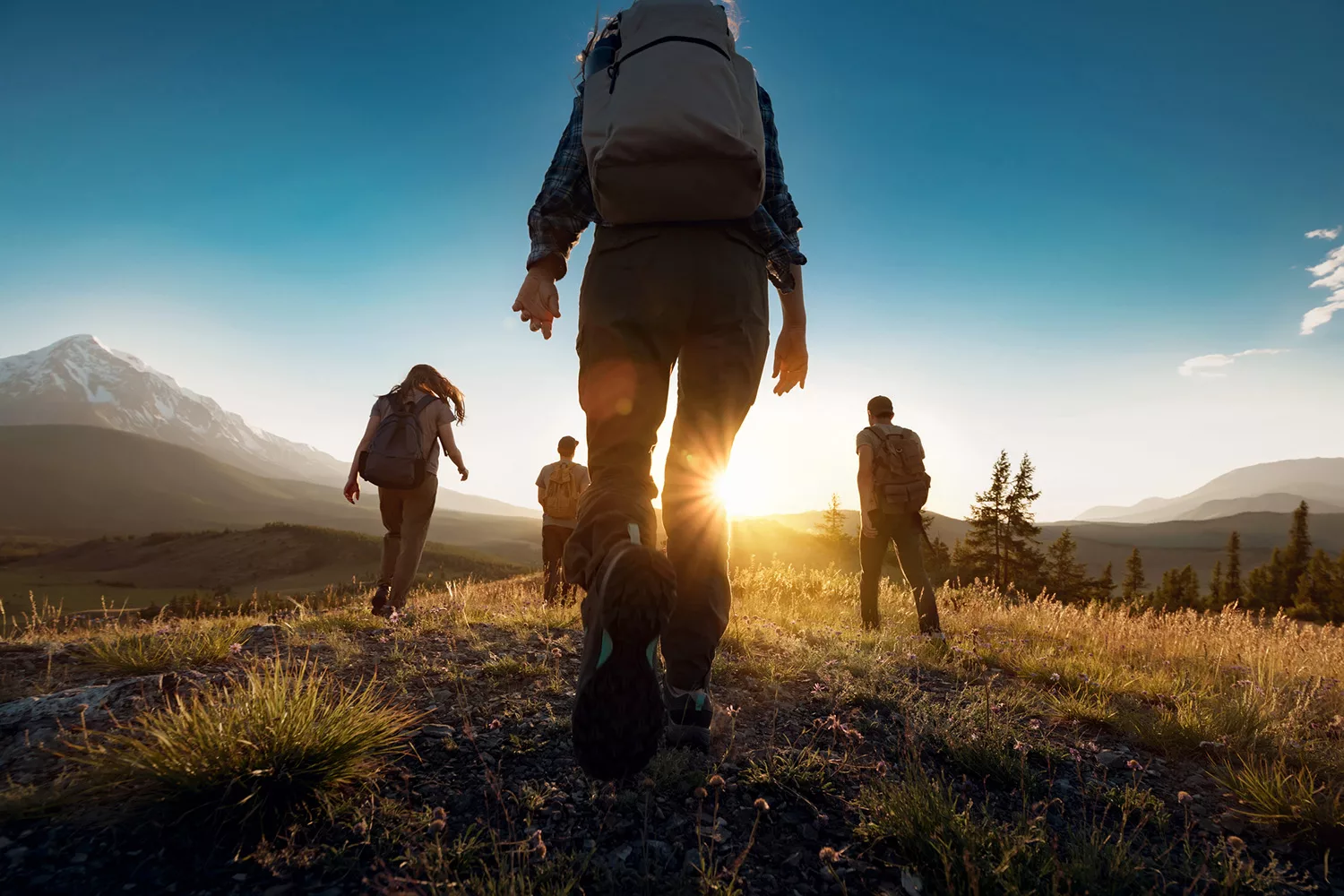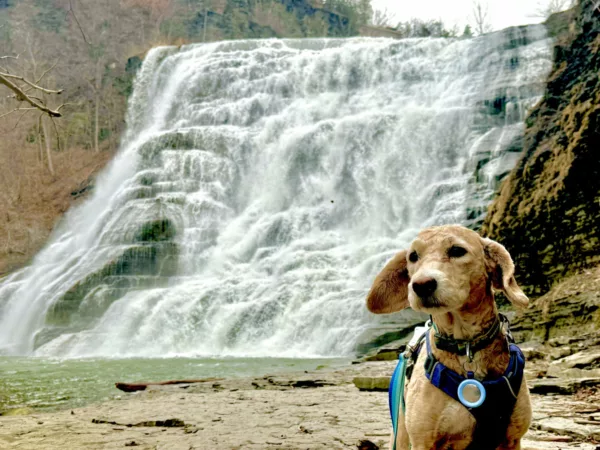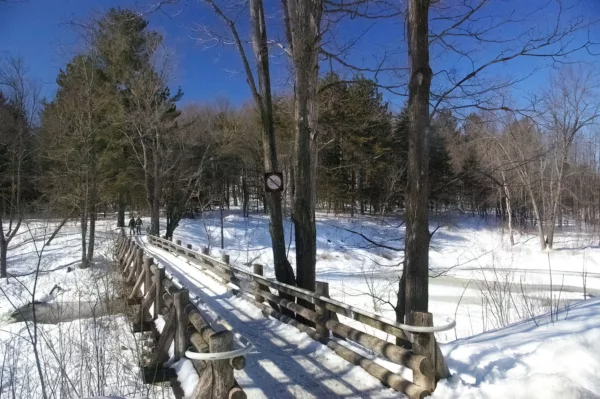10 Essential Items for Your Next Outdoor Adventure

There’s only one thing worse than carrying a heavy backpack on your outdoor adventure: forgetting the gear you need to ensure your safety, leaving yourself ill-equipped to handle emergency situations.
Every hiker and camper should always carry these 10 essential items. While this list doesn’t cover absolutely everything that you need in your pack, it gives you a starting point for the in-case-of-emergency basics you shouldn’t leave home without.
Light
 iStock
iStock
What you need: A flashlight or headlamp, like the Black Diamond Spot. If applicable, pack extra batteries.
Why you need it: In the mountains or forest, it might get darker faster than you expect. In fact, North Shore Rescue in North Vancouver, British Columbia says that lack of light is the most common reason they receive calls for help from hikers.
Signalling Devices
What you need: Something to draw attention to yourself, such as a whistle, like the classic Fox 40. For flares and bear bangers, try the Tru Flare pen launcher kit.
Why you need it: If you get lost, it can be hard for Search and Rescue to locate you. Use a whistle instead of shouting, as your voice will become hoarse quickly, especially if you’re dehydrated. Flares are great visual signals and bear bangers double as protection from aggressive bears.
Fire Starter
What you need: A lighter or matches, ideally waterproof.
Why you need it: Sometimes Search and Rescue can’t send a team to get you until the next day if your call comes after dark or if the weather is too unfavourable to fly a helicopter. You might need to start a fire to keep warm and avoid hypothermia overnight—and not just in winter.
Warm and Waterproof Clothes
 Kristin Laser
Kristin Laser
What you need: An ear cover such as a toque or Buff as well as warm and rainproof layers. For warm layers, try the Patagonia Down Sweater Jacket or the Patagonia Micro Puff. The Outdoor Research MicroGravity AscentShell is a great-value rainproof hard shell.
Why you need it: Warm and waterproof layers protect you from cold-related injuries. Avoid cotton clothing and instead opt for sweat-wicking synthetic materials or wool. A peaked hat and sunglasses will help keep the sun out of your eyes.
Repair Tools
 Live the Adventure ClubWhat you need: A pocket knife, like the Swiss Army Knife Climber, or a multitool such as the Leatherman Bond. Duct tape, cable ties, ski straps and gear repair tools for your tent, hiking boots or other key items are also useful.
Live the Adventure ClubWhat you need: A pocket knife, like the Swiss Army Knife Climber, or a multitool such as the Leatherman Bond. Duct tape, cable ties, ski straps and gear repair tools for your tent, hiking boots or other key items are also useful.
Why you need it: Repair tools are handy for anything from building a fire or shelter to gear repairs and first-aid.
Shelter
 Rick McCharles flickr cc by 2.0
Rick McCharles flickr cc by 2.0
What you need: An emergency blanket or a bivouac sack like the MSR E-Bivy™.
Why you need it: When you’re not already carrying a tent, you should pack emergency shelter in case you’re stranded overnight or caught in a storm. Bright colours like orange are highly visible which will help Search and Rescue locate you.
Water and Food
 iStock
iStock
What you need: A full water bottle or bladder. For a simple water filter solution, try Aquatabs. Electrolyte crystals can be selected based on taste. Food should be nutritious and well-balanced.
Why you need it: Staying well-fed and hydrated is important for any outdoor activity. You should always pack food and around 1-2 litres of water on any trip—even the short ones—in case you’re on the trail longer than intended.
First-Aid Kit
 Kristin Laser
Kristin Laser
What you need: A fully stocked and individually tailored first-aid kit.
Why you need it: A first-aid kit is a must-have to treat basic injuries and wounds. What’s in your kit will depend on the length, number of people and risk level of your trip, as well as your personal medication and needs. Don’t forget the sunscreen!
Navigation
 iStock
iStock
What you need: Download Gaia or AllTrails for cellphone-based navigation apps. Purchase paper maps from places such as Clark Geomatics and National Topographic Service for use with a compass.
Why you need it: Even when a trail is well-marked, it’s possible to lose your way, especially in adverse weather conditions. Navigation tools help keep you on course. As a best practice, carry a paper map and compass in addition to your digital GPS, and have a basic understanding of orienteering. This is a great back-up if your electronics fail.
Communication
 iStock
iStock
What you need: Your cellphone or satellite-based communications devices like a Spot or InReach.
Why you need it: If you get into trouble, you’ll need to call for help. If you’re in service, your cellphone should work. Ensure your location services are turned on so that rescuers can locate you. If you’re going to be out of cell reception or your phone battery might die, carry a satellite-based device. A fully-charged external battery—and the correct cords—is also a good idea.
P.S. Select pieces of the above gear were included in past Live the Adventure Club Gear Boxes
 Live the Adventure Club Ambassador Josie Dinsmore
Live the Adventure Club Ambassador Josie Dinsmore
Join your fellow Canadian outdoor enthusiasts in our unique online community and receive a collection of 4-6 gear items carefully curated by Canada’s outdoor experts every three months. Your first box ships immediately—what are you waiting for?
Join the Live the Adventure Club now
















